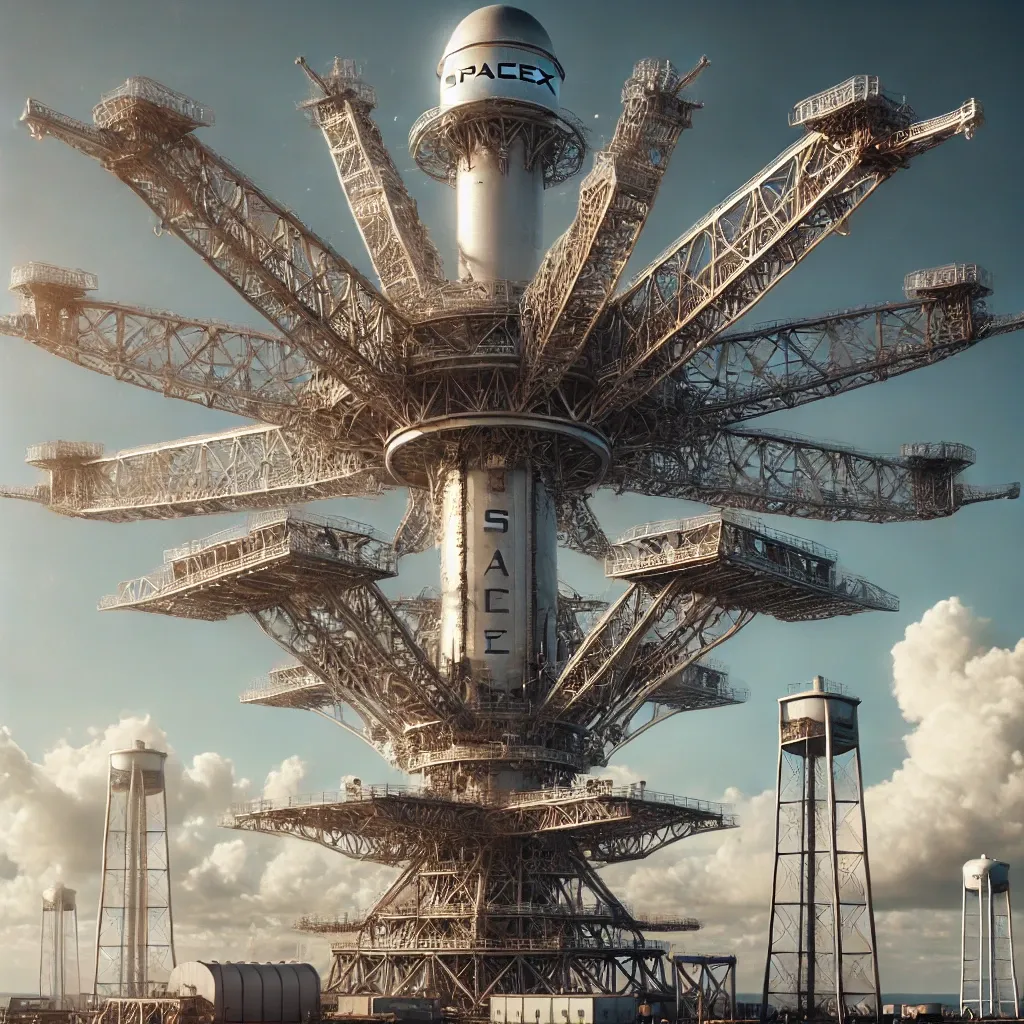Is SpaceX on the verge of redefining how we recover rockets? The Starship catch mechanism, designed with unprecedented precision, promises to revolutionize space travel. What goes into catching a descending booster with “chopstick” arms? How does this system work, and why is it crucial for the future of reusable rockets? Let’s dive deep into the engineering marvel that SpaceX has introduced.
Starship Catch System: How It Works and Why It Matters
The Starship catch system is an integral part of SpaceX’s goal to make Starship fully reusable. Instead of relying on traditional landings, this system employs a catch tower equipped with massive mechanical arms—dubbed “chopsticks”—to capture the descending booster mid-air. This design eliminates the need for complex landing gear and allows for quicker reusability.The precision required for such a catch is immense. Imagine a booster traveling at extreme speeds, with only a fraction of a second to align perfectly with the arms. The mechanical catch system offers benefits beyond mere spectacle:
- Eliminates heavy landing gear: Less weight on the booster improves payload capacity.
- Quicker turnaround time: A caught booster can be reloaded and relaunched faster.
- Reduced landing risks: Removes the chance of tipping or damaging the rocket.
- Engineering complexity: A technological leap, bringing unprecedented control and precision to spaceflight recovery.
The Starship booster must position itself precisely above the tower, with the chopsticks catching it by the grid fins. These arms are synchronized with telemetry systems that provide real-time data for an accurate catch.
Chopstick Catch Arms in Action: Precision and Challenges
The Starship chopstick catch system is designed to capture heavy boosters at high speed. These arms are among the most advanced mechanical systems ever built, working in tandem with the Starship’s navigation. They must account for variables such as weather, speed, and trajectory, ensuring the booster doesn’t sway uncontrollably during its descent.The tower’s design allows for both flexibility and strength, crucial in handling the weight of the booster while compensating for atmospheric conditions.Here are the core engineering feats behind these chopstick arms:
- Mechanical Precision: Built to handle tons of weight without structural failure.
- Real-time Navigation Sync: Aligns perfectly with descending boosters.
- Vibration Absorption: Reduces mechanical stress from turbulent air.
- High-Strength Materials: Constructed from advanced alloys for durability.
- Motorized Movement: Allows fine-tuned arm adjustments during approach.
- Backup Safety Mechanisms: In place to prevent accidents during the catch.
Despite the complexity, SpaceX aims to demonstrate the feasibility of catching boosters regularly, eliminating time-consuming land-based recovery systems.
Starship Catch Tower: A Pillar of SpaceX’s Vision for Reusability
The Starship catch tower stands as one of the most ambitious pieces of infrastructure SpaceX has developed. This massive structure not only supports the chopstick arms but also serves as a refueling and maintenance hub, readying Starship for future missions. Its height, sturdiness, and adaptability are essential components for successful launches and landings.The tower functions more than just a catcher:
- Launch preparation hub: Houses necessary systems to prep the Starship for lift-off.
- Fueling system integration: Allows quick refueling for rapid reusability.
- Landing precision monitoring: Acts as a critical node in coordinating booster descent.
- Modular design: Enables upgrades as new technologies become available.
- Minimizes ground crew intervention: Increases safety and reduces operational delays.
The concept has been described as audacious but also as essential. With fewer moving parts on the booster, SpaceX reduces maintenance and improves operational efficiency, moving closer to the dream of rapid space travel and exploration.
Conclusion: The Future of Spaceflight Recovery is Here
The Starship catch system, with its towering chopstick arms and innovative design, symbolizes SpaceX’s relentless pursuit of reusability. The engineering and precision behind the system reflect a paradigm shift in rocket recovery. Quicker launches, improved payload capacities, and lower costs all become achievable goals through this ambitious mechanism.As Elon Musk once said, “When something is important enough, you do it even if the odds are not in your favor.” With the Starship catch system, SpaceX aims to turn impossible odds into routine operations, paving the way for humanity’s journey beyond Earth.Whether you’re an aerospace enthusiast or just someone curious about the future of space travel, the Starship catch system marks the beginning of a new era—where catching rockets mid-air may become just another part of the mission.






